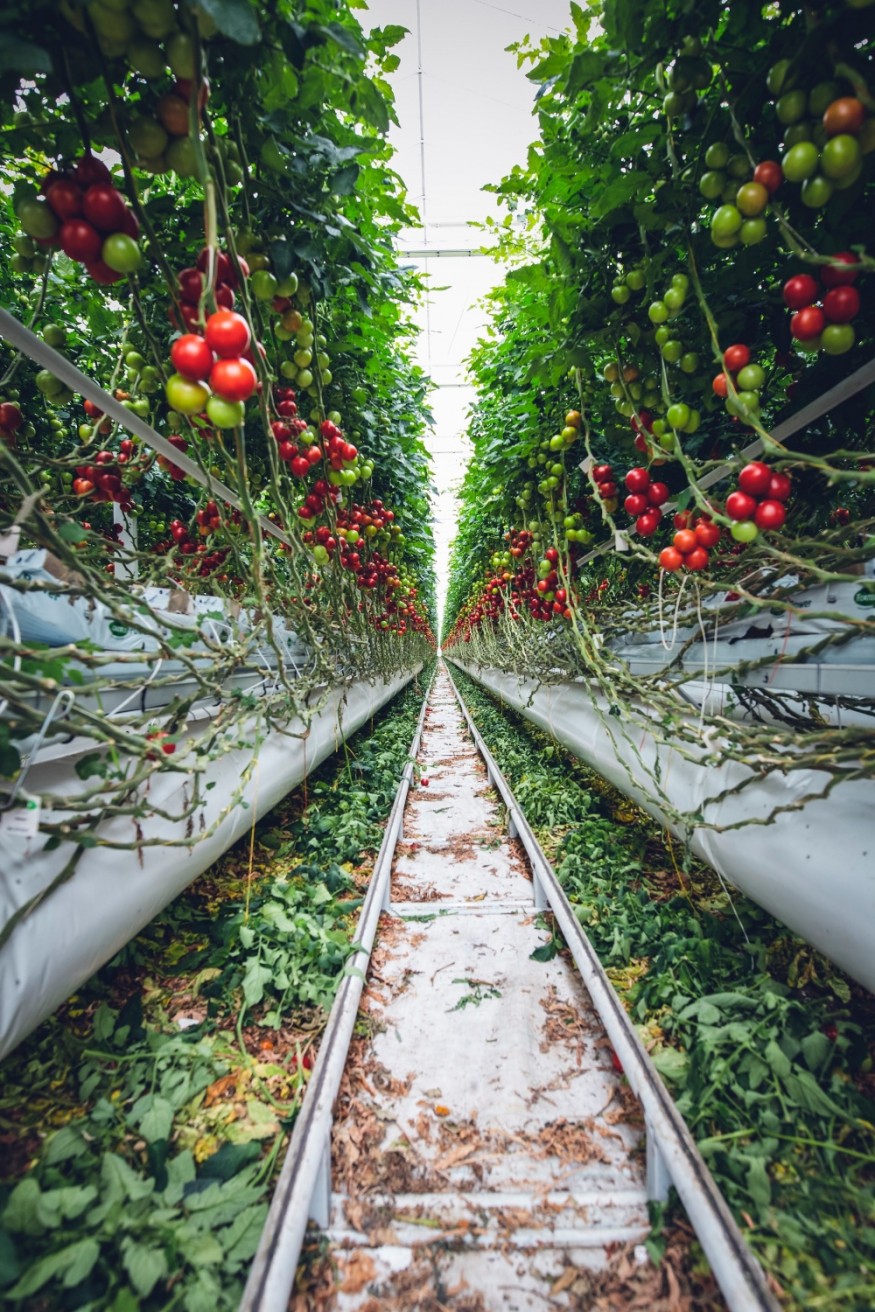This approach is becoming more popular in the US and is hailed as the next development in food production. But do they provide a greener option to conventional farming?

Using Robots
Four robots called John, Paul, George, and Ringo carefully carry seedlings from barcoded trays into towers almost 15 feet tall and then hang vertically within a 4,800 square foot grow chamber at a highly regulated indoor farm in industrial South San Francisco.
Instead of dirt, sunshine, or tractors, the clean environment run by the indoor farming business Plenty is filled with rows of hanging crops meticulously monitored by cameras, sensors, and artificial intelligence. When a tower is prepared for harvesting, a balletic automated procedure resembling a conveyor belt for a dry cleaner starts.
The tower is gently grabbed by a robot named Garfunkel (his neighboring counterpart is called Simon), who then flips it on its side and places it so a machine may cut it. The greens are examined by workers wearing navy-branded jumpsuits for flaws, but there are nearly none. The pesticide-free item is then packed and loaded into a truck for delivery to a nearby market, where the consumer handles it for the first time.
Also Read: Plant-Based Alternatives May Cut Emissions More than Any Other Green Investments
Future of Agriculture

The world of indoor vertical farming, which, depending on whom you ask, will either change the future of agriculture in a warming world or, given its high energy costs, is a problematic climate solution.
Nate Storey, co-founder and chief science officer of Plenty, declared that "we are entering an era where climate change is affecting what we grow and how we grow it." In the end, I believe we are securing agriculture for our species.
By 2050, researchers predict that there will be approximately 10 billion people on the planet, most of whom will live in cities, necessitating a 70% increase in global food production. But today's food systems are not prepared since there is a shortage of agricultural land due to the climate issue and urbanization.
There are reportedly more than 2,000 vertical farms producing goods in the US, including lettuce, herbs, and berries. Large-scale greenhouses from businesses like AppHarvest and Gotham Greens, as well as industry heavyweights like Plenty, Bowery, Kalera, and AeroFarms, which can run 365 days a year regardless of weather, view themselves as contributing to the answer. Investors also concur.
Growing Market
The market is anticipated to expand to $9.7 billion globally by 2026, topping the funds obtained in 2018 and 2019 by almost $1 billion in 2021.
In its $400 million Series E fundraising round, Walmart invested Plenty earlier this year. The retail giant will purchase leafy greens from Plenty's new 95,000-square-foot flagship farm in Compton, California, which will open early next year for all its California locations.
As part of the new arrangement, Plenty will also produce Driscoll's strawberries indoors at their research and development farm in Laramie, Wyoming.
However, detractors argue that the method is far less environmentally benign than its marketing claims. They wonder how it can feed a society that depends on cereals like soy, corn, and wheat for their calories.
Related Article : Artificial Photosynthesis May Help Combat Food Shortage by Producing Food Without Sunlight
For more news update about alternative lifestyle and the environment, don't forget to follow Nature World News
© 2025 NatureWorldNews.com All rights reserved. Do not reproduce without permission.





